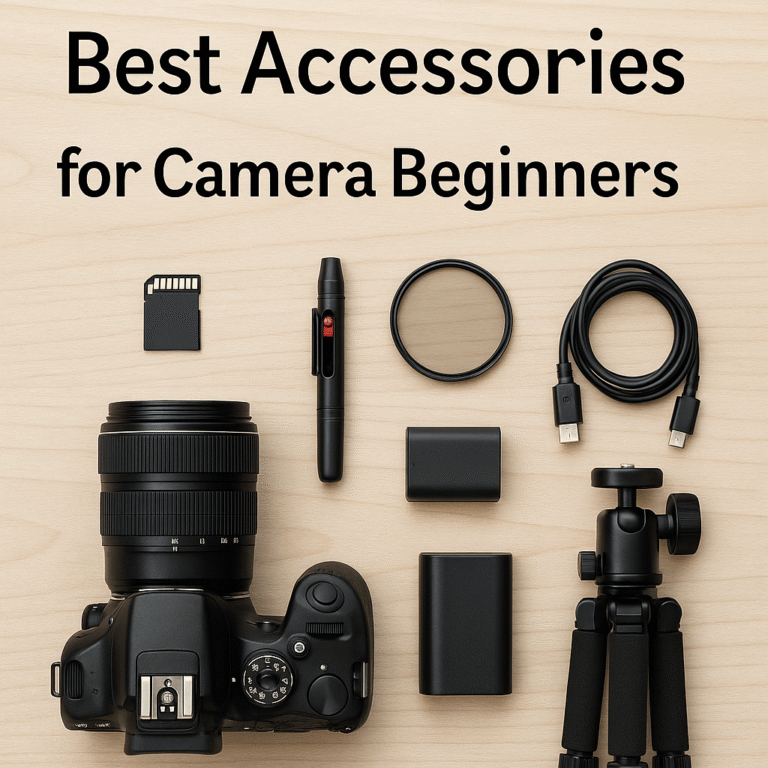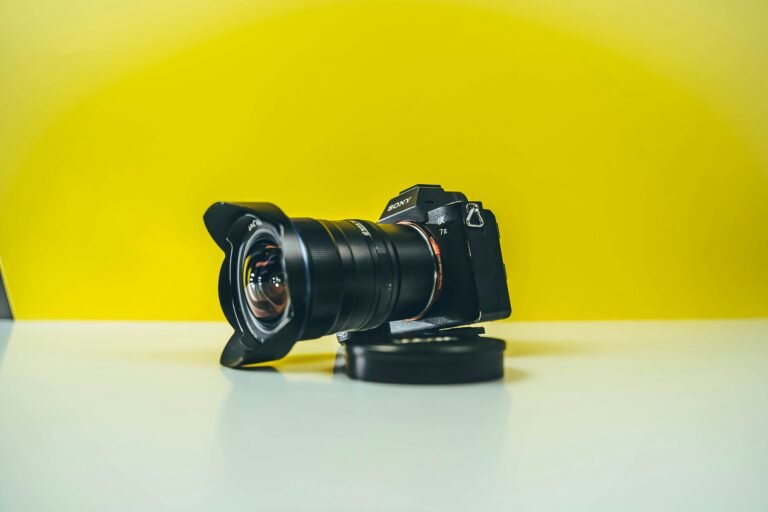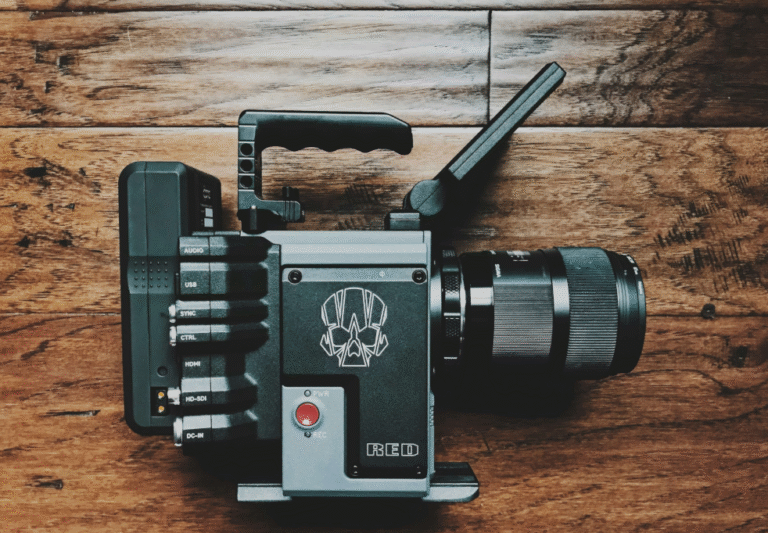Understanding Your Needs: Photography vs. Videography
When embarking on the journey of capturing moments through a lens, it is vital to understand the fundamental differences between photography and videography. Photography primarily focuses on still images, while videography encompasses the art of creating moving images or video content. Each discipline has its own set of requirements, which will dictate the type of camera you should consider—a crucial aspect when choosing a professional camera.
Key features to contemplate when selecting a camera for photography include resolution and low-light performance. Higher resolution cameras provide finer detail in images which is particularly beneficial for printing large formats or cropping without losing quality. Entry-level cameras for beginners that are easy to use and understand often incorporate features that allow for quick adjustments, enabling users to experiment and learn without overwhelming complexity.
On the other hand, videography necessitates a focus on frame rate, autofocus capabilities, and video resolution. Cinematic videos typically require higher frame rates to ensure smooth motion. A camera designed for videography may feature advanced video options, such as 4K recording, which is becoming a standard in the industry. While dual-purpose professional cameras exist, which can adequately serve both photography and videography needs, understanding the primary use case will help guide your camera selection.
Imagine a photographer who captures landscapes at sunrise, where clarity and detail are paramount. Conversely, consider a videographer recording a wedding, where dynamic movement and narrative flow are crucial. An inexpensive camera for beginners may suffice for casual use, but investing in equipment that caters to your specific needs—be it photography or videography—will enhance your creative endeavors and ensure suitability for your chosen style.
Budgeting for Your First Professional Camera
When venturing into photography and videography, budgeting for your first professional camera is a crucial step. It’s important to establish a price range that balances your needs with the quality you aim to achieve. Entry-level to mid-range professional cameras can vary significantly in price, making it necessary to make informed decisions about where to allocate your resources.
Typically, entry-level professional cameras are priced between $300 and $800. In this budget range, there are numerous inexpensive cameras for beginners that are easy to use and understand. For instance, models like the Canon EOS Rebel T7 or the Nikon D3500 provide good image quality and user-friendly interfaces, making them suitable choices for novice photographers.
As you move into the mid-range category, approximately $800 to $1,500, you will find dual purpose professional cameras that serve both photography and videography well. Cameras such as the Fujifilm X-T30 and the Sony A6400 not only boast advanced features but also offer impressive video capabilities, thus providing great value for your investment.
To save money without compromising on quality, consider purchasing used or refurbished models from reputable retailers. This approach can significantly extend your options, enabling you to find high-quality cameras for beginners at a more affordable price point. Additionally, keep an eye out for seasonal sales, or consider bundling your camera with lenses and accessories to maximize your savings.
Ultimately, setting a realistic budget and identifying what features are most important to your photography or videography journey will help you choose a professional camera that meets your needs without breaking the bank. A well-planned budget can lead to discovering a camera that not only fits your financial constraints but also enhances your creative endeavors.
- 16 Megapixel CMOS Sensor
- 5X Optical Zoom – 28mm Wide Angle Lens
- 1080P Full HD Video – Vlogging Camera
Simplifying Features: What to Look for in a User-Friendly Camera
When choosing a professional camera, especially for photography and videography, it is essential to prioritize user-friendly features that simplify the learning curve for beginners. An ideal camera for novices will incorporate intuitive controls that are easy to navigate, enabling new users to focus on capturing images rather than grappling with complex settings. Cameras designed with beginners in mind often feature clearly labeled buttons and dials, which help in understanding functionality without overwhelming the user.
Another critical aspect to consider is the availability of automatic settings, such as scene modes or intelligent auto features, which are particularly beneficial for those who are still learning the fundamentals of photography. These options allow beginners to shoot with confidence, as the camera optimizes settings based on environmental conditions. Inexpensive cameras for beginners are typically equipped with these automatic features, offering a seamless experience as they allow users to capture impressive images without needing to delve too deeply into manual settings.
Additionally, helpful guides or tutorials are invaluable resources for new users. Many manufacturers now provide extensive online tutorials or built-in guides within the camera menus. These resources enable beginners to quickly learn the essential functions of their devices, fostering an understanding of photography concepts as they operate their cameras. Cameras designed specifically for beginners often come with these educational tools, making it easier for users to enhance their skills over time.
In summary, selecting a user-friendly camera involves looking for intuitive controls, automatic settings, and accessible guides. By focusing on these features, beginners can easily find cameras that are easy to use and understand, thereby streamlining their entry into the world of photography and videography.
Aesthetic Appeal: Choosing a Camera that Looks Good and Feels Right
When selecting a professional camera, aesthetic appeal should not be overlooked. The design and ergonomics of a camera significantly influence a user’s experience, particularly for photographers and videographers who may spend hours holding and operating their equipment. Therefore, it is crucial to choose a camera that not only delivers exceptional performance but also boasts an attractive appearance and an intuitive user interface.
One of the key considerations when choosing a camera for beginners is the balance between style and functionality. An inexpensive camera with a sleek design can instill confidence in a novice photographer, while a clunky or overly complex model may discourage creativity. Cameras for beginners that are easy to use and understand typically feature streamlined layouts that allow for effortless navigation of settings and modes, enhancing the overall shooting experience.
For instance, many dual-purpose professional cameras have been designed with aesthetics in mind. Models like the Sony Alpha series and Canon EOS M line feature a modern look that appeals to emerging photographers while offering robust capabilities. These cameras present an appealing combination of style and performance, making them excellent choices for beginners who value both visual appeal and functionality.
Additionally, ergonomics play a vital role in ensuring that a camera feels right in hand. A well-designed grip can make a significant difference, particularly for those new to photography or videography. Models with adjustable grips and customizable buttons enable users to adapt their equipment according to personal preferences, making the photography process more enjoyable. Ultimately, by focusing on cameras that balance aesthetics with ease of use, beginners can select a model they will feel proud to use and carry around.
As ever feel free to leave a comment down below. We will reply as soon as is possible.







